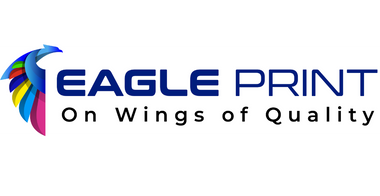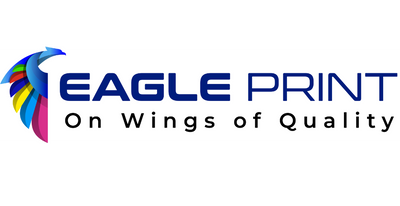Everything You Need to Know About DTF Materials 🎨🖨️
The world of custom printing is evolving—and DTF materials are at the forefront of this transformation. DTF, or Direct-to-Film printing, is rapidly becoming one of the most efficient and versatile methods for creating high-quality transfers on a wide variety of fabrics. But for professional-grade results, having the right materials is just as important as having a reliable printer.
Whether you're producing limited-edition apparel, team uniforms, or large-scale merchandising runs, understanding and choosing the best DTF materials can make or break your production quality. In this guide, we’ll cover the essential materials used in the DTF process, why each one matters, and where to source them for optimal results.
💡 What is DTF Printing?
DTF stands for Direct-to-Film—a printing method where artwork is printed directly onto a special PET film using pigment inks. The design is then covered with a heat-melt adhesive powder, cured, and finally transferred onto fabric using a heat press.
This technique works on many surfaces that traditional methods can’t, making it one of the most flexible solutions in the custom apparel industry.
Learn more about the process by visiting Wikipedia’s article on Direct-to-Film printing 📘.
🧰 Core DTF Materials You Need
Let’s break down the most important materials involved in Direct-to-Film printing and what they do:
1. PET Film Sheets (Transfer Film) 🧻
These are not your average plastic sheets. DTF PET films are specially coated to hold ink and adhesive powder during the transfer process. They come in rolls or cut sheets, typically sized 22” or 24” wide.
✅ Cold-peel and hot-peel options are available depending on your workflow.
✅ High ink absorption and anti-static coatings ensure smooth transfers.
Pro tip: Always store films in a dry, cool place to avoid curling or contamination.
2. DTF Inks 🖋️
Specially formulated pigment inks are used in the printing process. These include CMYK colors and white ink. The white layer ensures that colors remain vibrant on dark fabrics.
🎯 Must-have qualities:
-
Fast-drying
-
Non-clogging
-
Compatible with your printhead (Epson i3200, XP600, etc.)
Low-quality inks may clog nozzles or crack after heat pressing, so invest in premium brands to maintain print integrity.
3. Adhesive Powder (Hot Melt Powder) 🔥
This fine, white powder is applied to the wet ink on the PET film. After application, it's cured using a heat press or oven, turning into a glue-like base that adheres to fabric.
👕 Suitable for cotton, polyester, blends, canvas, and even nylon.
💪 Choose based on grain size (fine, medium, coarse) for different fabric types.
4. Curing Equipment (Oven or Heat Press) ♨️
After applying the powder, it needs to be cured to activate the adhesive. A DTF curing oven or a heat press with hovering capability can be used. Consistent temperature control is key.
Some printers include inline dryers for faster production—ideal for high-volume shops.
5. Heat Press Machine 💥
The final transfer step involves pressing the design onto the fabric. Most standard heat presses work well with DTF if they can maintain 300°F to 320°F (149°C to 160°C) evenly across the plate.
Look for features like:
-
Auto open or clamshell design
-
Adjustable pressure
-
Digital temperature and timer display
This is where quality matters most for application durability.
🧪 Optional (But Helpful) Accessories
-
RIP Software – Needed to manage color profiles and white ink layers.
-
Teflon Sheets – Protect both heat press plates and transfers during pressing.
-
Humidity Control Tools – Keep your inks and films in prime condition.
-
Lint Rollers – Dust and fibers can affect transfer quality.
🔄 How DTF Materials Work Together
Each material in the DTF process has a specific job—and missing one or using subpar versions can ruin your final product.
Here’s the quick workflow:
-
Design is printed on PET film using DTF inks.
-
Adhesive powder is applied over the wet print.
-
The film is cured using a heat source.
-
The cured film is pressed onto the garment.
-
Once cooled (or immediately, for hot-peel film), the film is peeled away—leaving a beautiful, vibrant design.
Whether you're creating custom shirts, uniforms, or even a DTF hoodie, having high-quality materials ensures that every product you produce reflects your brand’s commitment to excellence.
🌍 Eco & Quality Considerations
While the DTF process is more material-efficient than traditional methods, the quality and sourcing of materials still matter. Look for:
-
Non-toxic inks
-
Lead-free powder
-
Reusable protective sheets
-
Energy-efficient curing ovens
Using eco-conscious supplies also helps you promote a responsible brand image.
📍 Where to Buy High-Quality DTF Materials
If you're searching for a trusted source of premium DTF supplies, check out Eagle DTF Print’s DTF Material Collection.
They offer:
-
PET films in various sizes
-
DTF inks optimized for multiple printer models
-
Reliable hot melt powder
-
Application tools and accessories
-
Fast shipping and expert support
Perfect for small businesses, hobbyists, or high-volume production shops.
🔗 Internal Link Suggestion
Want to understand how to bring your DTF material to life in a finished product? Check out our article: How to Make DTF Transfers.
🧠 Tips for Using DTF Materials Like a Pro
-
Keep films clean and fingerprint-free to avoid transfer defects.
-
Pre-press garments to remove moisture and smooth wrinkles.
-
Test designs on scrap fabric before full production runs.
-
Store powders and inks in sealed containers to prevent clumping and drying.
-
Monitor curing temperatures—inconsistent heating causes poor adhesion.
🏁 Final Thoughts
If you want to create vibrant, high-resolution, long-lasting fabric prints, investing in quality DTF material is non-negotiable. From PET films and hot-melt powders to inks and curing tools, each part plays a critical role in your printing success.

